Craftsman strives to bring intangible cultural heritage back to life
Lin Weixing, a fifth-generation inheritor of the She ethnic group’s silver craft in southeast China’s Fujian province, has always been active in carrying forward the traditional craft art by constantly increasing its added value.
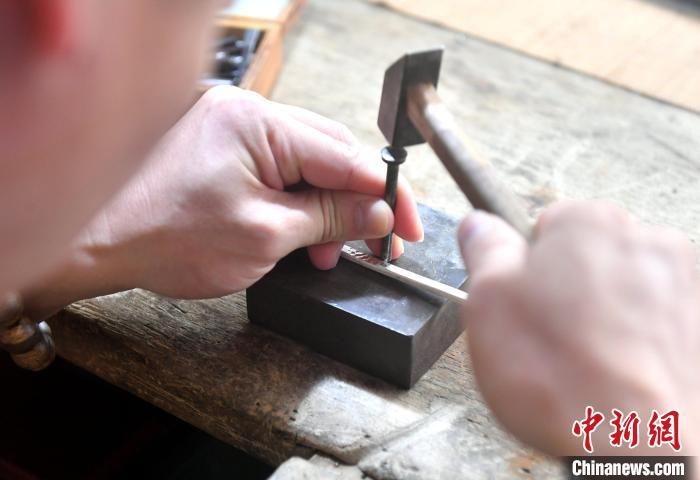
Photo shows Lin Weixing making a silver bracelet. (Photo/Lyu Ming)
The She ethnic group silver craft, which enjoys a history of more than 200 years, is one of the items on China’s list of national intangible cultural heritage. The silver implements, including accessories and tableware, are a part of the lives of people in the She ethnic group.
Running a silver store and a workshop in Fuzhou, the provincial capital, Lin said what he wants to do is to produce silver items that have connections with the people. A silver phoenix coronet he finished in 2017 is a pride of his. Lin said his predecessors have made their own phoenix coronets, but his is unique because apart from the She ethnic group silver craft, he also adopted a filigree inlay, a traditional craft of Beijing, and a wire inlay, a traditional craft of Guizhou in southwest China, when carving it.
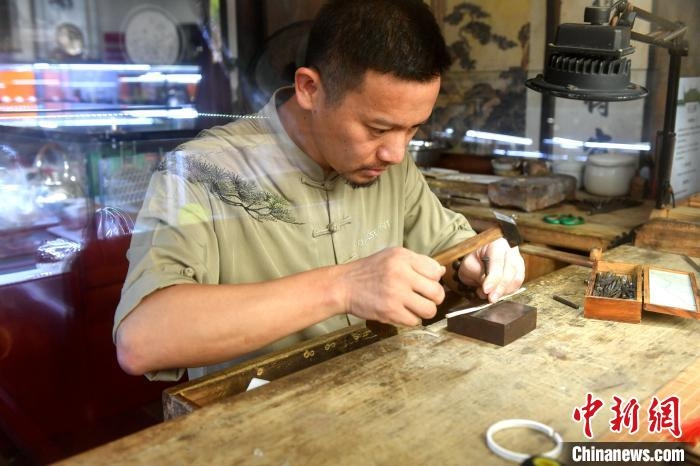
Photo shows Lin Weixing making a silver bracelet. (Photo/Lyu Ming)
Before he started to work on the phoenix coronet, Lin had taken part in a month-long research and training program organized by China’s Ministry of Culture and Tourism and Ministry of Education for intangible cultural heritage inheritors. The program was inspirational as he could exchange ideas with his counterparts from across the country.
In 2017, Lin began selling his silver products on e-commerce platforms. After the COVID-19 pandemic struck the whole world last year, his company transformed into an e-commerce platform and established cooperation with cross-border counterparts. Nowadays, Lin’s silver products have reached customers in Southeast Asia, and other parts of the world.
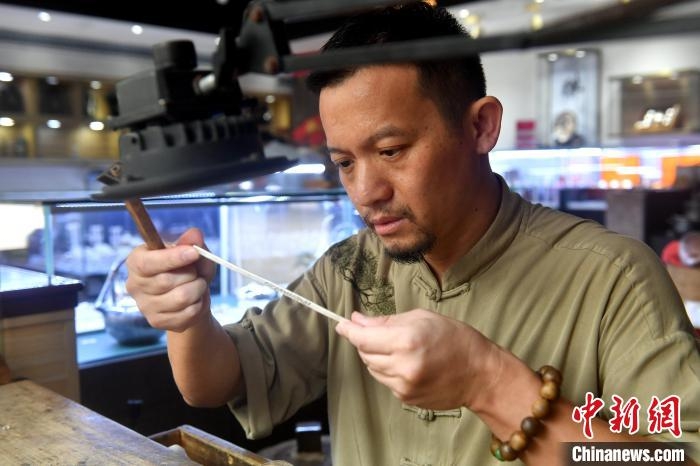
Photo shows Lin Weixing making a silver bracelet. (Photo/Lyu Ming)
In the process of moving his business online, Lin has realized that it is necessary to improve the added value of the products so as to cater to customers’ needs. “People nowadays have a strong interest in domestic brands, which means intangible cultural heritage is becoming increasingly valuable,” he said.
He disclosed that the sales of silver bracelets designed by him in 2019 surpassed 3 million yuan on the Qixi festival, or Chinese Valentine's Day, which fell on Aug. 14 this year.
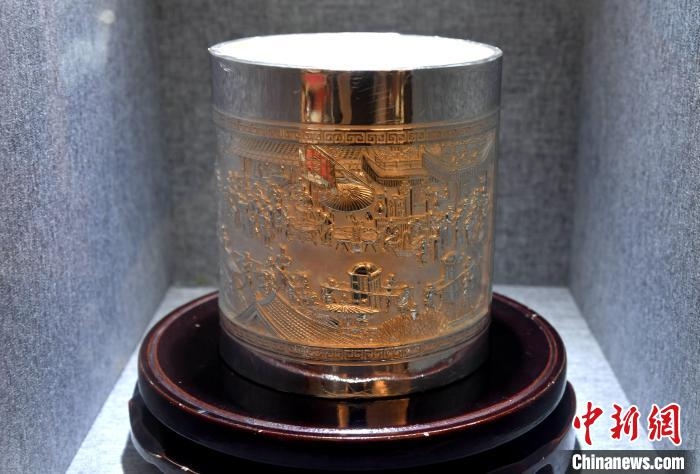
Photo shows a silver product displayed at Lin Weixing's store. (Photo/Lyu Ming)
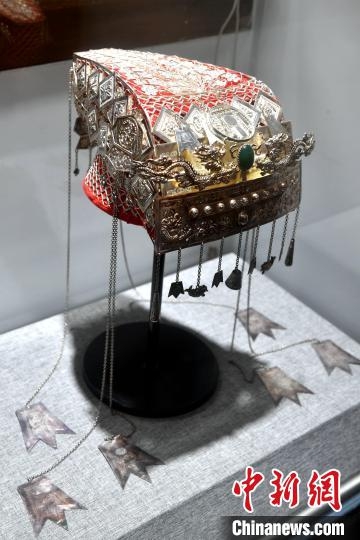
Photo shows a silver phoenix coronet finished by Lin Weixing. (Photo/Lyu Ming)
Photos
Related Stories
- China steps up protection of intangible cultural heritage
- Tibetan carpet: millennia-old intangible cultural heritage
- Traditional papermaking brings riches to remote township
- Exhibition about intangible cultural heritages conservation kicks off in Hebei
- Inheritors of China’s wonderous intangible cultural heritage
Copyright © 2021 People's Daily Online. All Rights Reserved.










